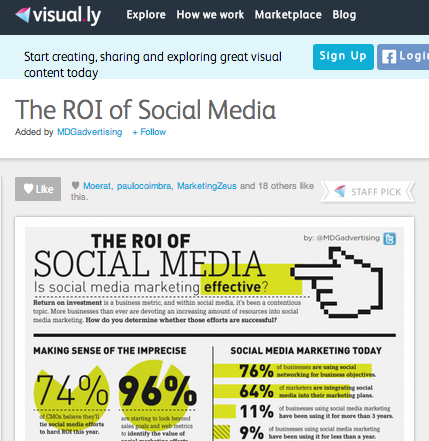To infographic or not to infographic is primarily a question of resources. If you’ve got them, these popular visuals can become powerful tactics in your content marketing playbook. But as with all types of content creation, the “magic” is in the strategizing details.
Don’t: Create the obvious.
Infographics are trendy, and the temptation to build them just because a competitor’s has gone viral is not a good reason to follow suit. This is simply another type of content, one that can be incredibly valuable in explaining complex and/or data-heavy concepts and processes, often much better than straight copy. Likewise, infographics are an excellent way to add humor or irreverence to tell a great short story.
But like all great content, infographics should serve a specific purpose for your audience. Would your audience truly benefit from a visual explanation of your idea, service, or product? Are there other content types, such as video or audio, that can relay that information better? Be certain before charging ahead.
Do: Invite an outsider to review. Then revise or reconsider.
Sketch out a rough visual of your concept with the exact copy you intend to use, and invite feedback from someone who isn’t familiar with the idea. Do they understand your information hierarchy from start to finish? If they don’t, identify the problem areas and revise. If the feedback reels in too much confusion, rethink your decision to build an infographic—before launching into any laborious design processes. At the same time, be sure to ask your tester what s/he learned to ensure that you aren’t stating the obvious.
Don’t: Assume your web or UX designer is the best person for the job.
He might be, but the skill sets and talents of web designers and UXers are not always steeped in graphic design. Logo work doesn’t cut it. If your design team doesn’t count a member whose portfolio includes text-focused work completed with full-featured design software (such as Adobe’s or Corel’s), consider your audience and content once again.
Is the information in your infographic detrimental to a large audience, and is the text simple and concise? In rare cases, such as “explaining the debt-settlement process,” graphics and typography may not require sophistication (or may demand the complete opposite). But this is likely to be rare with content marketers, whether in a B2B or B2C environment. Generally your audience will expect more aesthetic appeal, and you should never overlook delivering it. Have your lead designer (or an editor with solid production experience) contract the infographic work to a qualified designer or shop. Not only will it save you time and resources; it will meet the standards you’ve come to expect of visually stunning infographics.
Do: Follow these sites for inspiration.
Visual.ly: Providing a platform for individual designers to exhibit their work, Visual.ly is arguably the best one-stop source of infographic and data-visualization inspiration on the web today. The company’s cred comes with experience (partners include The Atlantic, Mashable, GE, and KISSmetrics, among many other high-profile, innovative brands and publications). I’m one of many people eagerly awaiting the opening of Visual.ly’s Labs, which intends to make my final “Don’t” (above) irrelevant with a “push-button approach” to creating information visuals. But that’s not even the best part for content junkies like us, anyway. I’m even more inspired by the fact that Visual.ly had the foresight to hire Lee Sherman, former editor-in-chief at Intuit and Mint.com, as its chief content officer.
Column Five Media: This infographic-centric shop does gorgeous work and is likely what you’re envisioning when the word “infographic” is mentioned. Combine that talent with social PR and content strategy services, and C5 emerges as a must-follow source for creative stimulus.
Jess3: If you’re a content professional buried in data, you should consider yourself lucky. The possibilities to create are endless—and likely overwhelming (especially without a streamlining editorial calendar). Jess3 specializes in data viz, and keeping tabs on its work will be therapeutic to your information overload. B2B content folks may recognize Jess3’s collaboration with Eloqua: “The History of Disruptive Innovations in B2B Marketing.”
Graphic Sociology: All this inspiration likely has your toes over the edge of the starting line. Step back. And follow Laura Norén’s blog. The graphic designer and New York University Ph.D. sociology candidate offers a much-needed critique of our hyper-visualized digital world. Read it and think.


